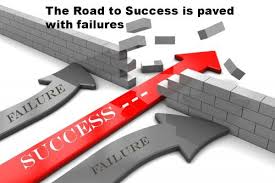Working Towards A Positive Business Culture
- September 02, 2016
- blog
- 0 Comments
Working Towards a Positive Business Culture
No doubt you’ve heard the words ‘culture’ and ‘engagement’ floating around, but do you really know what they mean and why they’re important in every business, not just the big ones?
Culture, like everything in your business, is guided by a set of core values. They outline what is important to you and your employees and they manifest themselves in every facet of your business. It can be slow to establish, but once it’s in place, it can take a long time to change.
Employee engagement can be measured to how connected employees feel to their jobs. Engagement is a little different, it ebbs and flows – it can be there one day, but gone the next.
Unsurprisingly, engagement and culture feed off each other. When engagement is high, positive culture can be established and enhanced, but without a positive culture, engagement tends to be lower.
How do I know if my small business has ‘culture’?
Believe it or not, every business has a culture. Regardless of whether you’ve thought about it before or tried to work towards creating a certain kind of culture, your business has one already. Whether or not it is a positive culture remains to be seen. Use the three questions below to find a place to start working towards a positive business culture.
- Think of 10 words to describe your business’ culture
- How strong do you think this culture is?
- Is this culture consistent?
What should I be focusing on to develop a positive business culture?
There are many different contributors to creating a great culture within your business. The best way to start is by working on a list of core values. These values are more than just a list to put in a folder and tuck it away and they’re more than inspirational quotes on the wall. This list of core values will be the driving force behind every action you take within the business.
If creating a list of values seems a bit too philosophical to get started, perhaps this list will give you some practical ideas to get started:
Physical Atmosphere
Everything from the number of windows in your workspace, right down to the colour of the coffee mugs can affect your employee’s levels of engagement. Other choices such as whether to have music playing aloud or letting each individual choose their own music through headphones; or whether to allow food to be eaten at desks or only within the break room can also affect the work environment.
Dress Code
The dress-code can be a double-edged sword. Valuing professionalism can often come at the cost of the comfort of employees, but valuing employee comfort can sometimes place your business’ professional appearance in peril. Outlining a dress code can be extremely important in ensuring your business is being portrayed in a way that aligns with your values.
Communication Styles
All businesses, regardless of how small, should outline how communication is to be carried out. If the tone during inter-employee conversations is informal, does this carry over into customer conversations? Thinking about whether this is the communication style that best reflects your business is important and adjustments must be made accordingly. Likewise, if there is a communication breakdown within your business, the damage repair could cost you. Outlining communication procedures and points of contact should be a priority to avoid mistakes and misunderstandings.
Big companies like Google, Apple and Netflix are some of the most desired places to work and their work culture is increasingly a reference point for many other companies.
Who’s to say small businesses can’t be as desirable as those big names? All it takes is spending some time thinking about your values, the things you want to internalise and the kind of environment you want to work in.
Want to set a great culture in your business? Then come along to Bxponential in October. At this free event you’ll hear Naomi Simson from RedBalloon – widely awarded as a Great Place To Work – talk about great culture, setting values and employee engagement. You’ll walk away with key resources and strategies you can implement in your business immediately. Book your free tickets here.







 what you’ve always done, and you’ll keep getting the same results
what you’ve always done, and you’ll keep getting the same results


 g the buddy serve a customer, then serving the next customer under supervision. Or in an office environment, this could take the shape of shadowing the buddy on a customer call.
g the buddy serve a customer, then serving the next customer under supervision. Or in an office environment, this could take the shape of shadowing the buddy on a customer call.




 k your network for any recommendations and referrals.
k your network for any recommendations and referrals.